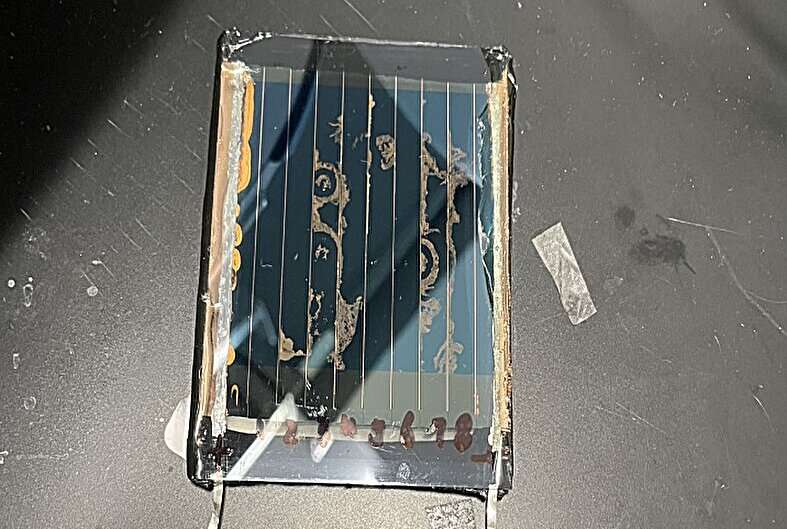If an individual solar cell is shaded and other cells in the same module are not, the sunlit cells can try to drive current through the shaded cell, resulting in an increase in temperature and potential damage to the cells. These conditions put the shadowed cell under a condition known as reverse bias, which makes solar cells unstable and deteriorates their performance over time.
Researchers at University of North Carolina at Chapel Hill recently introduced a new strategy that could improve the stability of perovskite solar cells (PSCs) under reverse bias conditions. This strategy, outlined in a paper published in Nature Energy, could facilitate the future deployment of perovskite-based photovoltaics (PVs) in real-world settings.
“The reverse bias stability or shading induced instability of solar cells drew the attention of the PV community only recently,” Jinsong Huang, corresponding author of the paper, told Tech Xplore. “The shaded cells are subjected to the large reverse bias imposed by the rest of cells which are not shaded. For PSCs, the reverse bias-induced instability was reported to be much more severe in the past.”
Perovskite cells are known to have a significantly thinner photoactive layer than other existing PVs. As a result, the electric field induced by reverse bias conditions can be far larger in this type of cell.
“The notorious ion migration in perovskites also makes them much less stable under reverse bias,” Huang said. “In most prior studies, PSCs were reported to break down or degrade after a few seconds to a few minutes under reverse bias of a few volts. If this problem is not solved, future perovskite modules will need many bypass diodes to protect them, pushing up their fabrication costs.”
When reviewing previous literature, Huang and his colleagues observed that some PSCs were significantly more stable under reverse bias conditions. This motivated them to investigate the mechanisms underpinning this greater stability, in the hope of devising an effective method to stabilize perovskite cells.
“Degradation under reverse bias is complicated, as it varied with bias voltage, duration, perovskite quality and device stacking,” Huang explained. “In this study, we chose p-i-n structured PSCs as they have shown good operational stability from our previous studies. We used our optimized perovskite composition to minimize other possible degradation pathways.”
Huang and his colleagues applied various reverse bias values to PSCs, while changing the device stacks. They then closely examined what happened in the devices and tried to determine whether the phenomena they observed were correlated to the device’s performance.
“By doing this, we were able to identify the degradation mechanism inside the devices,” Huang said. “We carefully distinguished the degradation behavior with breakdown and gradual degradation. The former happens under high reverse bias in a short period, while the latter happens under low reverse bias in a longer duration.”
The experiments carried out by Huang and his colleagues yielded interesting results. Specifically, they unveiled a series of electrochemical reactions that were associated with the degradation of PSCs under reverse bias conditions.
These reactions entailed the generation of iodine, which led to the corrosion of the Cu electrode in the cells. This process, in turn, triggered the breakdown and degradation of the solar cells.
“Inspired by what we learned, we used a device stacking of lithium fluoride/tin oxide/indium tin oxide, which also makes devices stable under light and heat, to inhibit the iodine formation under reverse bias the electrode corrosion,” Huang said. “By doing so, the lifetime of modified PSCs could last up to 1,000 hours under reverse bias of -1.6 V. Such a good performance really surprised me, as up to one year ago I would never have thought they could be so stable.”
The findings gathered by this team of researchers could soon inform the development of more stable perovskite-based PVs, which could contribute to their future large-scale commercialization. Now that their research project is complete, Huang and his colleagues hope to conduct additional studies, which would be aimed at delineating the upper limit of the reverse bias stability for PSCs.

